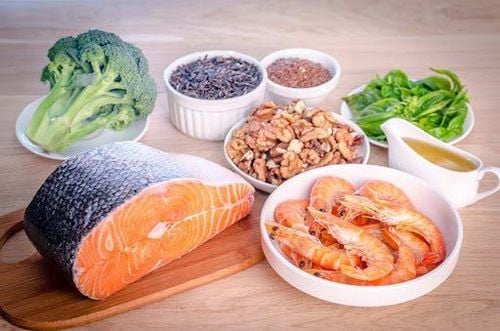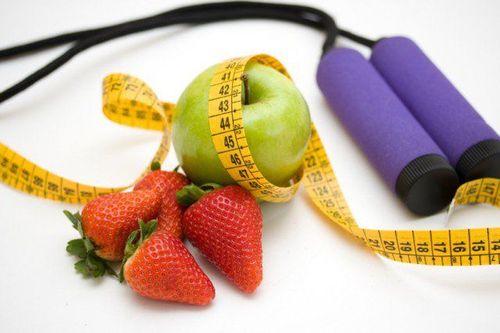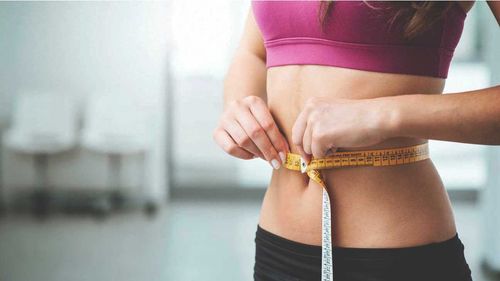This is an automatically translated article.
Usually, traditional weight loss programs focus on cutting body fat. However, bodybuilding is considered an effective approach to weight loss, while also emphasizing the importance of losing fat and gaining muscle at the same time.
1. What is muscle regeneration?
Body composition is referred to as: Fat mass and fat-free mass (muscle, bone and water). Body composition analysis provides a better understanding of health than other screening methods that only take weight and height into account.
Because your body fat percentage is related to muscle mass, it also better reflects overall health than just weight or BMI. Therefore, body reconstruction focuses on body composition rather than weight. Unlike a standard diet, bodybuilding is a lifestyle in which fitness techniques and nutrition lead to healthy changes in your body's fat-to-muscle ratio. Refactoring means to form something again or in a different way.
Although body contouring has been used by athletes for quite some time, it has only recently become effective for people who are simply trying to get in shape and lose fat. Bodybuilding isn't just about losing weight.
Usually, people use a scale to gauge their progress when trying to lose weight. If the number on the scale drops, most dieters make the inference successfully. However, the problem with using the scale as the only method of tracking your progress is that most scales do not distinguish between fat loss and muscle loss, which is an important factor in measuring. health.
Having too much body fat is linked to a wide range of health problems and can increase the risk of chronic diseases such as diabetes, cancer and heart disease. Conversely, having a reasonable ratio of muscle mass to body fat can improve your health while reducing your risk of these diseases. If done properly, bodybuilding changes the structure of your body so that you have less fat and more muscle.
Prioritizing bodybuilding techniques over other weight loss methods can lead to much slower weight loss, or no weight loss at all, due to concomitant muscle gain. However, contrary to popular belief, your muscle-to-fat ratio is the best indicator of your overall health and fitness, not your body weight. Additionally, increasing muscle mass increases your resting metabolic rate (RMR), which means you'll burn more calories at rest.
2. The process of muscle regeneration
Since body remodeling is more about a lifestyle than a diet, there is no specific procedure. Instead, people who want to gain muscle while burning fat must commit to making specific changes to their diet and training regimen to facilitate recovery. Instead of tracking your weight on a scale, you should evaluate the results by taking a measurement of your body circumference and measuring your body fat.
With traditional weight loss methods, people can significantly cut calories and increase cardiovascular exercise to expend more energy. While this can lead to weight loss, it will most likely reduce both fat and muscle mass. When following a body rebuilding routine, it's important to both preserve and build muscle and lose fat at the same time. Adjustments to diet and exercise are required to achieve this goal. While performing cardio exercises is important for weight loss and overall health, intense strength training is needed to change body composition. In addition, a high-protein diet will facilitate fat loss while supporting muscle growth.
Methods of body regeneration may vary depending on your end goal. For example, a lean bodybuilder who wants to gain muscle and lose fat will have different diet and exercise needs than an overweight person who wants to lose fat while toning. Body contouring benefits everyone regardless of how much fat you want to lose or how much muscle you want to gain. The key to effective body regeneration is finding the right balance between diet and exercise.
3. How to lose fat
From increasing your risk of many chronic diseases to damaging your mental health and body image, excess body fat can negatively impact health in a variety of ways. To lose body fat, it is necessary to create a calorie deficit, which can be achieved by consuming fewer calories or expending more energy.
However, cutting out huge amounts of calories through a very low calorie diet or engaging in cardio exercises does not preserve muscle mass.
To lose fat while maintaining or building your figure, it's best to reduce calories moderately while incorporating muscle-building exercises into your routine, such as strength training.

Giảm mỡ tăng cơ cùng lúc giúp hỗ trợ sự phát triển và duy trì cơ bắp
4. Nutrition and slimming
Diet quality is also important when it comes to fat loss. Consuming a high-protein diet has been shown to reduce fat while preserving lean body mass.
A fat loss study performed in 88 overweight adults found that diets containing 1.4 g/kg body weight were more effective at maintaining muscle mass and reduced body fat compared to a diet providing 0.8 g/kg of protein. Studies have shown that higher protein intake is necessary for athletes trying to lose fat while maintaining muscle.
In addition to consuming protein for hiking and increasing calorie consumption, here are tested methods to reduce body fat:
Cut out processed foods: Eat more processed foods, such as: such as fast food, candy, packaged baked goods and chips, and these foods are associated with excess body fat. Reduce carbohydrate intake: Replacing carbohydrates (especially sugary carbs) with foods rich in protein, healthy fats, and fiber can increase feelings of fullness and decrease levels of insulin, a hormone that promotes fat storage. Increase fiber intake: Eating more fiber-rich foods, such as vegetables and beans, can help reduce body fat, especially in the abdominal area. High-intensity interval training: Interval exercises that combine short, high-intensity bursts of energy followed by short recovery periods are more effective at reducing body fat than exercises. Continuous, moderate intensity.
5. Ways to gain muscle
While losing fat is important, maintaining or gaining muscle is key to changing your body composition. Focusing solely on diet and ignoring exercise routines can lead to loss of muscle mass. It's important to incorporate a healthy diet to both lose fat and gain muscle while helping to support muscle growth and maintenance.
When you are trying to build muscle, the right diet plays a very important role. A healthy diet rich in whole foods, such as fresh produce, healthy fats, complex carbohydrates, and protein, is best for everyone, regardless of fitness goals.
People who are trying to improve their body composition may need to focus on increasing their protein intake, as studies have shown that a high protein diet is necessary to promote growth. muscle. Recent research has shown that 1.6–2.2 g/kg body weight per day is best for maximizing muscle gain and strength.
Furthermore, research from the International Society of Sports Nutrition suggests that even higher protein intakes of 2.3–3.1 g/kg per day may be needed to maintain lean body mass in resistance-trained people are following a low-calorie diet.
You should distribute protein sources evenly throughout the day by consuming protein-rich foods such as: eggs, poultry, dairy products and protein supplements every three to four hours.
Fitness nutrition to increase muscle and lose fat: Along with a diet rich in protein, whole foods, it is important to incorporate endurance training exercises into your routine. Strength training involves using resistance training to build strength and muscle mass.
Incorporating strength training exercises such as: Squats, bench presses, pushups and other muscle building exercises for two to three days per week along with one to two days per week of interval training can be Perfect combination. Studies show that combining high-intensity interval training with endurance training leads to fat loss, as well as increased muscle mass and strength
Bodybuilding emphasizes the importance of building muscle while losing fat, can reduce the risk of chronic disease and boost metabolism. Try increasing your protein intake to at least 1.6 g/kg body weight per day and completing strength training at least twice per week. Everyone, from elite athletes to simple people looking for a healthy way to get in shape can apply body regeneration methods.
Please dial HOTLINE for more information or register for an appointment HERE. Download MyVinmec app to make appointments faster and to manage your bookings easily.
Reference source: healthline.com












